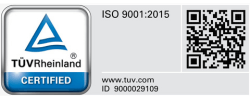Have you ever thought of what journey a single piece of equipment or machinery took before ending up in space? Or what type of testing was done before the rocket’s blastoff? Or why a piece of equipment failed early?
Well somewhere along the path to it’s final stage of manufacturing, the components and sub-assemblies were developed and designed with the environmental conditions of where it would be operating in mind. Without this difficult step in the manufacturing process you would be far more likely to have some component not working prematurely (Exp. exposing a lithium-ion battery to so much cold will reduce its longevity and storage capacity). By testing the component, you can ensure quality and reliability, and most importantly overall performance in the environment it is expected to work in. So, this is the way it is done. There are various ways to test a component for specific environmental conditions, one of them is the use of temperature or thermal chambers.
Details About It
A Temperature Chamber, even known as an environmental test chamber, performs thermal tests using convection. They normally use a fan for forced air convection, like a convection oven used in a house; however, rather making cookies you are testing products and equipment.
Not so fast
The “ovens” depend on the fans to move the air through the device under test for heat transfer. So, if you want better performance, you are going to need more air flow. Increasing the airflow comes at a cost since the unexpected heating from the air friction is more. Also more power is required for the test (e.g. operating costs go up) and after that there will be increase in noise and system wear as well.
Despite the fact how easy (or complicated) it may be to bake a cake or grandma’s cookie recipe in a convection oven, the performance of a test inside a Thermal Chamber is not that easy. In fact, there are min. three types of thermal testing that can be performed within a thermal chamber: Thermal cycling tests burn-in tests and the thermal shock tests. All three tests evaluate a component at different temperature extremes in a different way:
Thermal cycling is commonly a more controlled rate, changing between the two temperature extremes. The speed of change can be adjusted to limit thermal stresses and allow guarantee of parts achieving the temperature. There are hold times called soaks at mentioned temperatures to make sure the parts get the expected temperature. Faster ramp rates are commonly better in production but on the other side, care need to be taken to not pressurize the parts beyond what they are able to withstand. Burn-in test is usually a sustained hold at a given temperature (usually hot) to verify operational parameters of a device in a specific environment over time, Thermal shock, on the other side, is taking the component from one temperature extreme and another and “shocking” it with very fast changes. This is completed with testing chambers or thermal platforms that either automatically transfer the component being tested from one hot chamber to another nearby cold chamber or simply by using high performance heaters and cooling in a single chamber zone.
One more major thing that should be considered is meeting industry standards of testing. A lot has been written over time regarding exact environmental testing and most options will depend on the intended destination for the product. There are few industry standards that are used as rules or guidelines for testing that can be adapted to other needs. The environmental chamber or thermal platform will allow you to ensure it proves the standards of the application it will be used for. For example, MIL-STD-810, Environmental Engineering Considerations and Laboratory Tests, was designed originally for products used in the defence industry; though, this standard is routinely used for commercial products too. This standard covers a wide range of environmental conditions such as thermal shock testing, expose to high and low-temperature extremes and humidity. So, depending on whatever environment your product will operate in there is a good chance you will be using MIL-STD-810 for environmental simulation in the design phase to maintain quality and reliability.
But that standard is only the tip of the iceberg. There are numerous other standards (e.g. ASTM) whether or not they are related to the defence industry that require additional design specifications and testing. So, in case you want to ensure quality and reliability through an environmental simulation, then consider the best choice to be a temperature chamber to make sure first-time quality work of your product.
Enquire with Isotech Technology or email us at [email protected] in case of any queries.


Leave a Reply